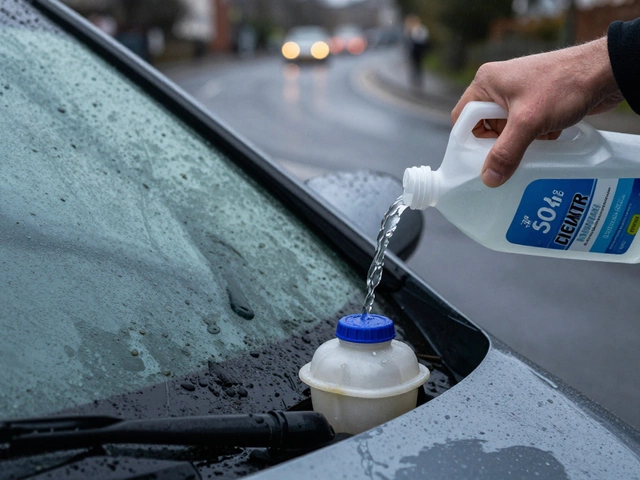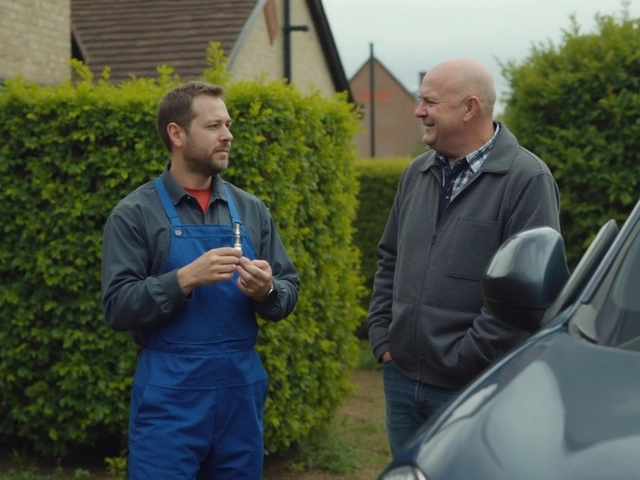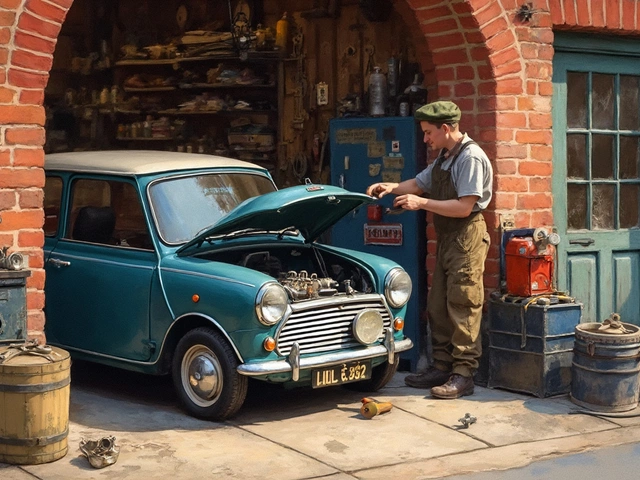Most drivers never think about their radiator—until there’s white steam pouring out from under the hood. Thing is, that radiator is what keeps your engine cool, and if it fails, you could be stuck on the side of the road with a huge repair bill. So, how often do you really need to replace your car radiator?
On average, a car radiator lasts anywhere from 8 to 10 years, but a lot depends on your driving habits, the climate you live in, and how well you take care of your car’s cooling system. Don’t be fooled by just the age, though. Some radiators last the lifetime of the car, while others give up after only a few years—often because of ignored coolant flushes or bad habits like topping up with tap water.
Ignoring regular maintenance is one of the fastest ways to shorten your radiator’s life. Trust me, waiting for a leak or an overheating light to show up on your dashboard isn’t a great strategy. Getting ahead of problems starts with understanding how your radiator works and what puts it at risk.
- How Long Car Radiators Usually Last
- What Makes a Radiator Wear Out
- Symptoms Your Radiator Is Failing
- Ways to Extend Your Radiator’s Life
- When a Repair Isn’t Enough
- Smart Maintenance Habits
How Long Car Radiators Usually Last
Car radiators aren’t all created equal, and their lifespan isn’t set in stone. Most factory radiators hang in there for about 8 to 10 years. This isn’t just a random guess—mechanics and car makers have noticed that’s a fair window before problems crop up in normal daily driving. If you’ve got a high-mileage car, there’s a good shot your radiator is still the original, especially if you’re not dealing with overheating or leaks.
Now, if you’re driving a newer car, many car radiators are made from lightweight aluminum and plastic. Nice for fuel efficiency, but these tend to go bad a bit sooner than the old-school copper-brass ones. Once the plastic tanks crack (which happens more in hot climates or with stop-and-go driving), you’re looking at a replacement, no matter the age.
Your driving style plays a part too. Folks who face lots of traffic, haul heavy loads, or live where summers are extra hot push their cooling systems much harder. That can shave years off the radiator’s life. On the flipside, if the car mostly sits in a garage and only does short, easy trips, your radiator might outlast even your interest in the car.
Still, don’t bank on mileage or age alone. Coolant flushes, quality radiator caps, and not letting your coolant get grimy all make a difference. If you keep up with regular checks and avoid topping up your system with tap water (it leads to corrosion and scale), you’ll give your radiator the best shot at a long life.
What Makes a Radiator Wear Out
It’s wild how many things can mess up a radiator before it reaches old age. Most folks blame time, but there’s usually more going on under the hood. Let’s get into what really wears your radiator down.
First up, corrosion is the big villain here. When coolant breaks down or you add regular tap water (instead of proper coolant mix), minerals start building up inside. That build-up doesn’t just block flow—it eats tiny holes straight through the metal, especially aluminum. Over time, it weakens the radiator walls, and leaking follows.
Next, there’s physical damage. Rocks kicked up from the road, little fender-benders, or even a mechanic leaning in a bit too hard can bend fins or break connections. A radiator isn’t very thick or strong, so even minor knocks can lead to problems if you’re unlucky.
Watch out for electrolysis too. Sounds technical, but it just means stray electrical currents make their way through the coolant and slowly attack the radiator from inside. This happens more in older cars with poor grounds or electrical issues.
Bad coolant is another silent killer. If you skip recommended flushes, let coolant run low, or use the wrong type, you’re speeding up wear. Old coolant loses its anti-corrosive abilities and can even turn acidic, turning your radiator into rust city. Auto shops often find gunky, thick sludge during routine *car radiator* maintenance—and by then, it’s usually too late.
- Radiators that work in hot climates or heavy traffic break down faster, just because they run hotter and for longer times.
- Coolant leaks anywhere in the system cause air pockets, leading to hot spots and even more stress on the materials inside the radiator itself.
- Hard water, which contains more minerals, speeds up that nasty scale build-up inside.
Here’s a quick look at how common each factor is in wrecked radiators:
| Cause | Percent of Failures |
|---|---|
| Corrosion (Internal/External) | 55% |
| Physical Damage | 20% |
| Coolant Contamination | 15% |
| Electrolysis | 7% |
| Manufacturing Defect | 3% |
So, it’s usually not just bad luck when your radiator gives out. A little care goes further than you think. Even just using the right coolant and sticking to a flush schedule can mean the difference between a reliable radiator and one that lets you down at the worst time.
Symptoms Your Radiator Is Failing
Your car is pretty good at dropping hints when the radiator starts failing, but you have to know what to watch for. Miss these signs, and you could end up stranded or even ruin your engine. Here’s what usually gives a troubled radiator away:
- Coolant Leaks: Spot puddles of bright green, orange, or pink fluid under the car? That’s almost always coolant. Even slow leaks can become a big problem if they go unnoticed.
- Engine Overheating: If your temperature gauge suddenly creeps into the red, or you see steam from under the hood, chances are your radiator isn’t doing its job. Don’t just keep driving—this leads to expensive repairs.
- Low Coolant Warning Light: Modern cars often have a dashboard light for low coolant. If it keeps coming back even after topping off, check for leaks or cracks in your radiator.
- Rust or Discoloration: Pop the hood and look at the radiator. Brown or rusty spots mean coolant is probably seeping out and corrosion is setting in.
- Heater Problems: When your heater blows cold air, your radiator may be too low on coolant or blocked up with gunk.
- Sludge in Coolant: Open the radiator cap (when the engine is cool). If you see gunk, oil, or a milky look in the fluid, something’s wrong—could be a failing radiator or a bigger issue like a blown head gasket.
Here’s a quick look at how common some of these symptoms are among reported radiator problems:
| Symptom | Reported by drivers (%) |
|---|---|
| Coolant Leak | 41% |
| Overheating | 35% |
| Heater Not Working | 12% |
| Discolored or Rusty Radiator | 7% |
| Sludge in Radiator | 5% |
Don’t shrug off these signals. If you catch any of them, it’s time for a serious look at your car radiators before small issues get ugly—and expensive.

Ways to Extend Your Radiator’s Life
If you want your car radiator to hold up for the long haul, you’ll need to show it some love. The best thing is, most tricks to keep your radiator in top shape are simple and don’t cost an arm and a leg.
Start with the basics: keep up with your coolant changes. Old coolant turns acidic and chews away at metal; that’s a fast track to leaks and clogs. Most automakers recommend flushing and replacing coolant every 2 to 5 years, but check your owner’s manual for your specific model. Never mix coolant with plain tap water since it brings in minerals that can coat the inside of the radiator and lead to blockages.
Regularly check your radiator cap, too. A bad cap stops the system from holding pressure—causing your whole cooling process to fall apart. If your cap looks worn or crusty or you see coolant leaking around the seal, swap it for a new one. It’s a cheap fix and could save you hundreds down the road.
Be on alert for things that can damage the fins: rocks, bugs, and road debris. A clogged or bent radiator can't cool your engine right. If you drive in dusty, muddy, or bug-heavy areas, spray out the radiator using a gentle stream of water every now and then. But don’t use a pressure washer—those will bend or break delicate fins in seconds.
- Flush the coolant regularly—every 30,000 to 50,000 miles
- Inspect hoses and clamps for leaks or wear every oil change
- Use the recommended coolant type for your car (colors matter here—green, orange, or pink aren’t the same stuff)
- Fix small leaks early instead of waiting for bigger problems
- Clear away leaves, bugs, and dirt from the radiator front at least twice a year
Pay attention to what the numbers say. A recent AAA study found that nearly 1 out of 5 vehicles had low or contaminated coolant, which jacks up the risk for overheating and early radiator failure.
| Maintenance Action | How Often | Estimated Cost |
|---|---|---|
| Coolant Flush | Every 2-5 years | $75-$150 |
| Radiator Cap Check | Every oil change | $10-$30 |
| Hose Inspection | Every oil change | Usually Free |
| Radiator Cleaning | Twice a year | Free if DIY |
If you stick to these habits, your radiator could easily outlive the rest of your car. Most issues don’t show up overnight—little signs like slowly dropping coolant, or a temperature gauge running a bit hotter than usual, are your cue to act before you’re stranded somewhere.
When a Repair Isn’t Enough
There’s a point where fixing a radiator just isn’t worth the hassle, and ignoring this can cost you way more in the long run. Small leaks or clogged passages might get patched up with sealant, but those fixes are never permanent. If your radiator is corroded on the inside, or you see nasty sludge in the coolant, that’s a sign the whole thing could fail soon. You can’t just flush away internal rust, and continuing to drive this way, you’ll risk frying your engine.
Cracks in the plastic tank (especially if you spot coolant pooling under your car) or a split in the core usually mean the radiator is done for. Patching these often leads to repeat breakdowns. If the radiator is older than 8–10 years and you’re having overheating issues or repeated repairs, it’s usually cheaper—and safer—to swap it for a new one.
- If your car overheats even after a recent repair, that’s a glaring red flag.
- Brown coolant or visible rust flakes? That indicates widespread corrosion inside.
- Multiple tiny leaks along seams, or if the metal looks paper-thin, replacement is smarter than another patch job.
Check out how time and damage stack up against repairs:
| Condition | Repair Possible? | Recommended Action |
|---|---|---|
| Plastic tank cracked | Short-term only | Replace radiator |
| Multiple leaks in core | No | Replace radiator |
| Minor hose connection leak | Yes | Replace hose or clamp |
| Heavy internal corrosion | No | Replace radiator |
| Frequent overheating after fixes | No | Replace radiator |
Let’s face it—sometimes throwing money at ongoing repairs is just chasing your tail. Replacing your car radiators stops bigger problems, like warped cylinder heads or a blown engine, both of which are nightmares nobody wants in their repair history. If the signs above match your situation, don’t wait for your luck to run out.
Smart Maintenance Habits
Want to keep your radiator working like new for as long as possible? It’s not rocket science—just about building a few solid habits. You’ll save yourself from breakdowns and unexpected bills.
The first rule: stay on top of your coolant. Unlike oil, coolant doesn’t just disappear, but it can get dirty or lose its effectiveness over time. Most carmakers recommend changing the coolant every 2 to 5 years. Check your owner’s manual for the exact interval, since some newer cars stretch this out to 10 years or 150,000 miles if you’re using long-life coolant.
- car radiators really suffer when people mix up coolant brands or top up with regular tap water. Always use the type (and color) coolant listed in your manual—mixing types can cause sludge or even corrosion inside the radiator.
- Inspect hoses and clamps every oil change. Small cracks in hoses can turn into big leaks fast. Clamps that don’t grip snugly often mean trouble, especially in older cars.
- Keep an eye near the radiator cap and under the car for any signs of dried coolant (usually neon green, orange, or pink) or spots on the ground. Even a small leak can mean air is getting in, which turns coolant murky and speeds up rusting inside.
- Flush the entire system regularly. A shop can do this, or you can grab a flush kit and tackle it at home. This cleans out old coolant, scale, and debris that build up over time.
Loads of people wait until they see steam, but a better move is watching your temperature gauge. If it runs higher than usual—especially on hot days or in stop-and-go traffic—it’s time to dig deeper.
| Task | Recommended Interval | Reason |
|---|---|---|
| Coolant Flush | Every 2-5 years | Prevents buildup, protects metal |
| Hose Inspection | Every oil change | Stops leaks before they start |
| Check for Leaks | Monthly | Early warning for trouble |
| Radiator Cap Check | Every 12 months | Keeps pressure just right |
One more tip—don’t ignore your radiator cap. That little guy controls system pressure, and a worn or cracked cap can cause coolant to boil or leak. Replacing the cap every few years is cheap but makes a difference.
These habits might seem basic, but they’re the stuff that keeps your cooling system out of trouble and your engine smooth for years. It’s easy to skip, but your future self (and your wallet) will thank you.






